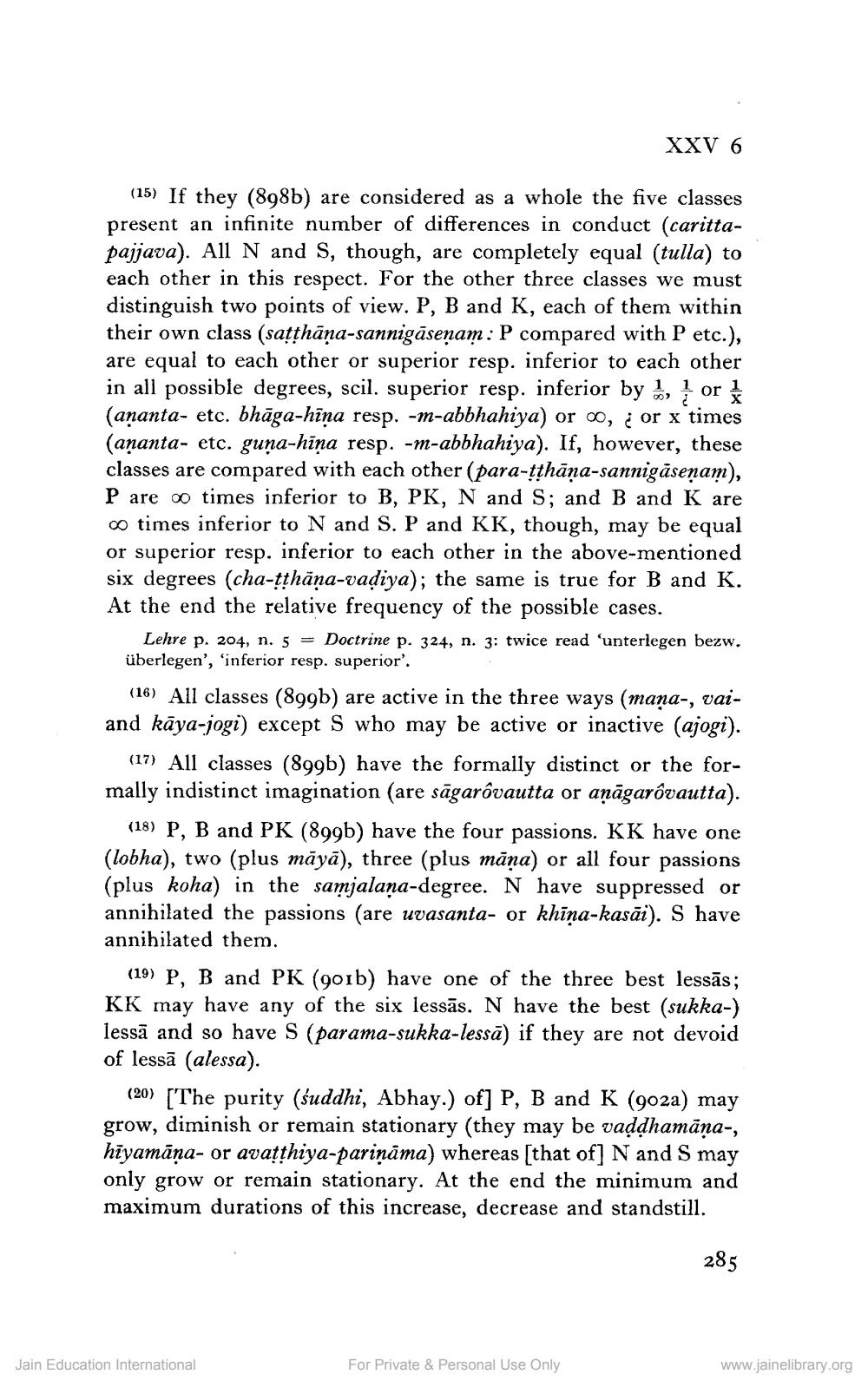________________
XXV 6
(15) If they (898b) are considered as a whole the five classes present an infinite number of differences in conduct (carittapajjava). All N and S, though, are completely equal (tulla) to each other in this respect. For the other three classes we must distinguish two points of view. P, B and K, each of them within their own class (satthāņa-sannigāseņam:P compared with P etc.), are equal to each other or superior resp. inferior to each other in all possible degrees, scil. superior resp. inferior by , or 1 (añanta- etc. bhāga-hīna resp. -m-abbhahiya) or oo, į or x times (ananta- etc. guna-hina resp. -m-abbhahiya). If, however, these classes are compared with each other (para-tthāna-sannigāsenam), P are o times inferior to B, PK, N and S; and B and K are 00 times inferior to N and S. P and KK, though, may be equal or superior resp. inferior to each other in the above-mentioned six degrees (cha-tthāna-vadiya); the same is true for B and K. At the end the relative frequency of the possible cases.
Lehre p. 204, n. 5 = Doctrine p. 324, n. 3: twice read 'unterlegen bezw. überlegen', 'inferior resp. superior'.
(16) All classes (899b) are active in the three ways (mana-, vaiand kāya-jogi) except S who may be active or inactive (ajogi).
(17) All classes (899b) have the formally distinct or the formally indistinct imagination (are sāgaróvautta or aņāgaróvautta).
(18) P, B and PK (899b) have the four passions. KK have one (lobha), two (plus māyā), three (plus māņa) or all four passions (plus koha) in the samjalana-degree. N have suppressed or annihilated the passions (are uvasanta- or khīņa-kasāi). S have annihilated them.
(19) P, B and PK (901b) have one of the three best lessās; KK may have any of the six lessās. N have the best (sukko lessā and so have S (parama-sukka-lessā) if they are not devoid of lessā (alessa).
(20) [The purity (śuddhi, Abhay.) of] P, B and K (9029) may grow, diminish or remain stationary (they may be vaddhamāņa-, hīyamāņa- or avatthiya-parināma) whereas [that of] N and S may only grow or remain stationary. At the end the minimum and maximum durations of this increase, decrease and standstill.
285
Jain Education International
For Private & Personal Use Only
www.jainelibrary.org




